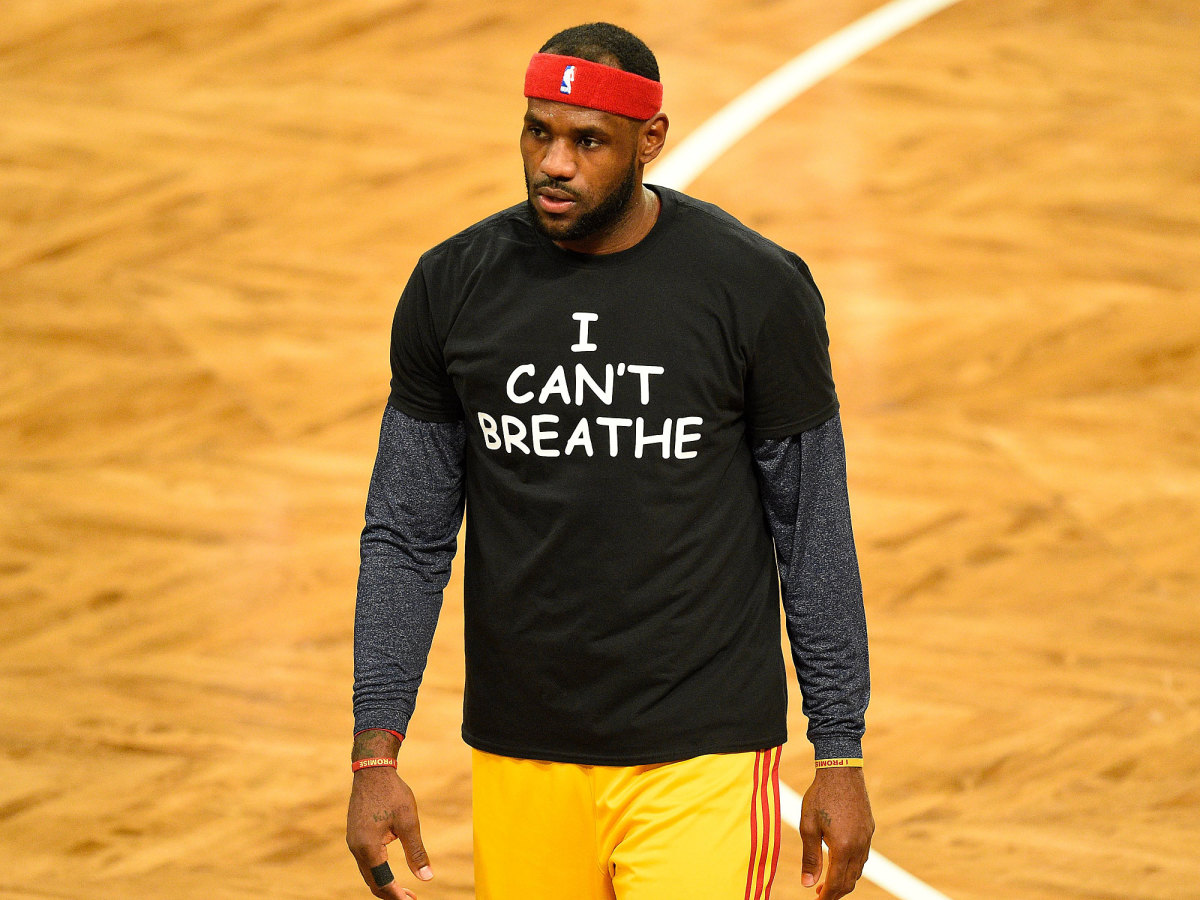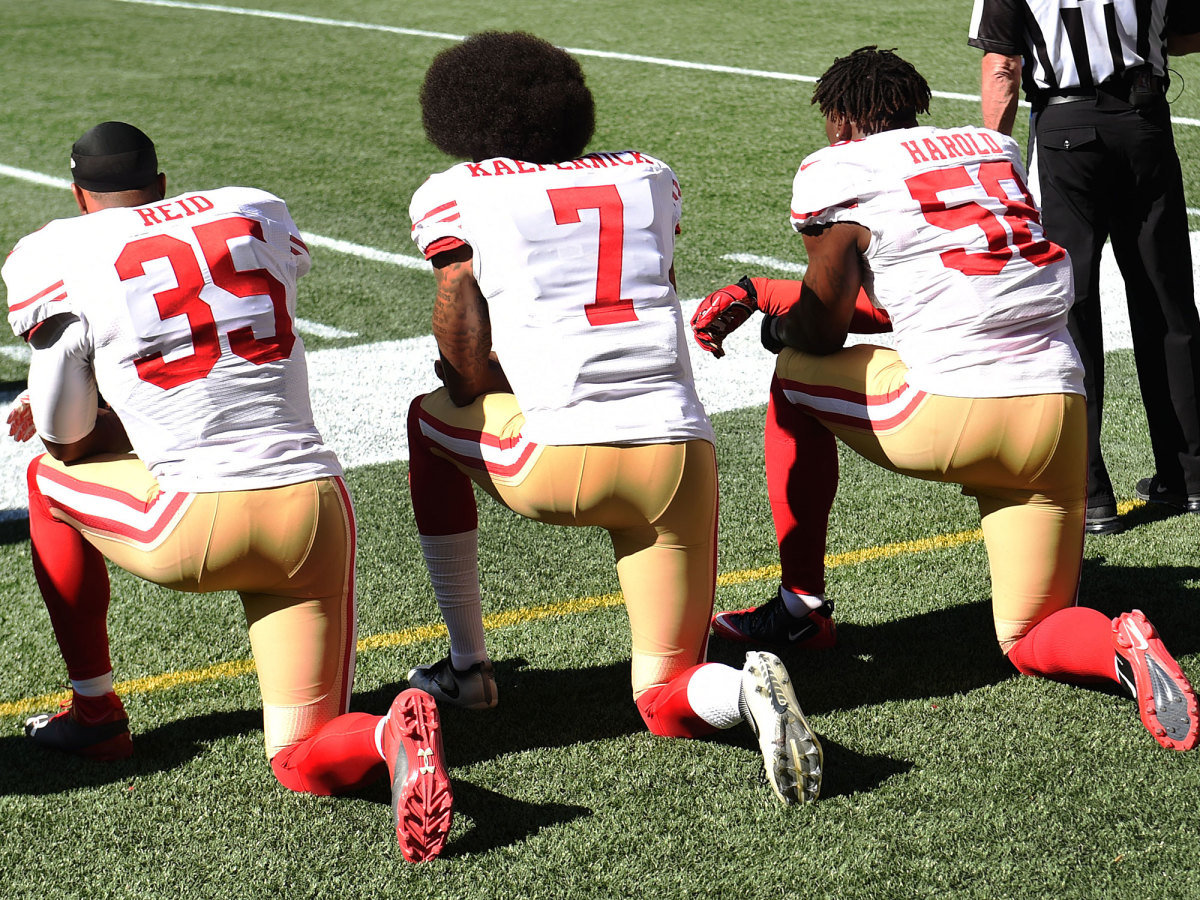Why we can expect increased athlete activism during Donald Trump's presidency

If we could just lose the whole tinhorn faux-patriotic pageant that seems to be part of every major sporting spectacle—and the bigger the spectacle, the tinnier the horn and the more faux the patriotism, it seems—then a lot of what’s coming down the golden escalator as the Donald Trump Era comes careering toward us could be avoided. Removing the giant flags, and the flyovers and even the National Anthem would go a long way toward depoliticizing the atmosphere in our various taxpayer-funded pleasure palaces. This never will happen, of course, because there’s too much money to be made and too much wool to be pulled over too many eyes. But it’s starting to look better and better as a policy because—I guarantee you—we are coming into an age of athlete pushback and athlete protest that’s going to make the 1960’s look like an Up With People reunion tour.
When the wave of protest in the 1960’s crested and rolled back, the period of the politicized athlete ended as well. For me, there was no better indication of how thoroughly that tumultuous time had faded from history than the extended national mourning last spring on the occasion of Muhammad Ali's death. He was eulogized as the People’s Champion, with little or no recognition that, when it really mattered, a great number of the People, some of whom worked for the federal law-enforcement apparatus, thought him to be a traitor who belonged in prison. To find the real meaning of his passing, you had to go to the streetcorners and parks of Louisville and talk to the anonymous people standing for hours with their handmade signs. They remembered when Muhammad Ali was not an anodyne national celebrity but a genuine champion for causes that seemed at the time worse than hopeless. Those were their dreams on which the greater American nation never would have any purchase.
A child of contradiction, Muhammad Ali was an essential American
Even so, there was a sense that the ice was cracking. A generation of athletes was coming of age that had been formed, not by the civil rights movement, like Jim Brown or Bill Russell, and not by the corporate transformation of society, like Michael Jordan or Shaquille O’Neal, but by a renewed atmosphere of public engagement and public protest. It had been boiling for a while. College athletes were rising up against the idiotic system by which their largely unpaid labor made other people very wealthy. Children of the digital age of instant communication, they knew better how to organize through the new technology than did the people tasked with keeping them in line. Moreover, outside events started landing so thick and fast that the insulating bubble of wealth couldn’t hold together under the bombardment.
I mark as a starting point the night in 2012 when the members of the Miami Heat photographed themselves wearing hoodies in solidarity with the family of Trayvon Martin, the Florida teenager shot to death for the apparent crime of getting crossways with the wrong local-cop-wannabe. In 2014, when Michael Brown was killed by a police officer, and Ferguson, Mo., exploded in protest, and when a New York man named Eric Garner was choked to death by a police officer, players from both the NFL and the NBA adopted the “Hands Up, Don’t Shoot” slogan of the Ferguson uprising, and they also wore T-shirts with the words, “I Can’t Breathe,” which allegedly was the last thing Garner said to the cop who was killing him.

Leagues and institutions also got into the act. In June of 2015, after the slaughter at Mother Emanuel Church in Charleston, S.C., the issue of flying the Confederate flag, and of other monuments memorializing the Southern rebellion, exploded. The NCAA had long refused to sanction events in states where the flag was flown on state property. In NASCAR, the infield at its average race often looked like Pickett's Charge, but after the church shooting even that organization got serious about banning the banner of treason at its races. This was similar to the events that occurred at the 2015 Final Four in Indianapolis. The week before the NCAA tournament began, in the middle of the night with only a corporal’s guard present, the state’s governor signed the Religious Freedom Restoration Act, a reactionary bill that seemed to sanction discrimination against the LGBTQ community in that state. The NCAA, which keeps its headquarters only a couple of blocks from the Indiana state house, howled in outrage, and it became one of the leaders in a general revulsion among major corporations doing business in Indiana. Events cooled down when the governor showed the white feather and signed an ad hoc “adjustment” to the bill that softened its impact.
That governor, by the way, was Mike Pence, now the vice president-elect of these United States. He was elected on a ticket with Donald Trump, a fellow who can count among his business achievements the fact that he almost singlehandedly killed the United States Football League.
Trump ran a campaign thick with racism, xenophobia and appeals to a fantastical America before Muhammad Ali and the rest of them wrecked it for everybody in the 1960s. A tape emerged in which Trump crudely discussed committing sexual assault and, when the tape came to light, he and his campaign dismissed it as “locker room talk.” Professional inhabitants of locker rooms went up the wall. To be fair, the president-elect didn’t lack for support from the sports world. I, for one, can now die fulfilled because I saw both Bobby Knight and Don King in a post-debate spin room.
As with presidential election, sports often prove we don't really know each other
But there was a clear divide among active athletes regarding the results of the election. Trump’s untoward remarks about immigrants lit a fire under many Latin athletes. His flirtation with what was politely called the “alt-right” summoned within a new generation of African American athletes the stories their parents and grandparents had told them. There was an almost instant empathy between the favored few—the “talented Tenth,” as Dr. W.E.B. DuBois called it—and the people most directly affected by the rhetoric coming from the Republican candidate and his campaign. Connected through the various platforms of social media, the athletes shared reaction to the ups and downs of the campaign with themselves and with the members of the general public. When the results came in, the same connections vibrated more intensely. A tweet from New York Giants wide receiver Victor Cruz was fairly representative:
“Protect your children,” Cruz wrote. “It’s up to us now.”
There seems to be little question that the next four (or eight) years are going to see more of this. The early decisions of the incoming administration, especially the appointment of Sen. Jeff Sessions (R-Ala.), whose history on racial issues is dubious at best, as Attorney General give no indication that the government will differ much from the campaign that established it in office. There will be decisions and there will be pushback, very likely in the streets as well as within the legislatures and state houses, and there will be pushback in the stadia and in the arenas, too.
On the professional level, the leagues and their teams, and the players that those teams employed, merged so smoothly and edgelessly into the globalized corporate economy that, for a couple of decades, it seemed as though the interests of the players and of the corporations that made them rich were one and the same. That’s what began to crack over the last eight to 10 years, as athletes seemed to reattach themselves somehow to the forces breaking loose in society. There is less spontaneity to their protests than there was in the protests of the 1960s, largely because they are more easily organized, but there is power behind them, too.
(And, it has to be said, the rise in visibility and power of women’s sports was essential to this new sense of activism. Having had to fight for their place in the sports world very recently, women athletes were far out in front on issues of class, race, and, obviously, gender and sexuality. The very fact of the WNBA was the kind of statement that hadn’t been seen in American sports since the demise of baseball’s Negro Leagues. In both cases, the mere existence of the institutions was an act of protest.)

The most recent flashpoint has been the demonstrations during the playing of the National Anthem, mainly at NFL games. Colin Kaepernick of the San Francisco 49ers started it, and it spread in various permutations across the league. Kaepernick gave as his reason the killings of Martin and Garner and a number of other African American citizens, and the rise of the Black Lives Matter movement as a force for change. The reaction to these protests was muted; even the NFL, which will fine a player if his socks are not regulation, managed for the first time in Roger Goodell’s recent tenure as commissioner to avoid a public relations calamity. There seemed to be a tacit agreement that, if you’re going to engage in the political act of playing the Anthem, which is a political act no matter how you feel about it, then it’s inevitable at times of political turbulence that the playing of the anthem will be a political flashpoint.
That’s the state of affairs as a new president replaces the first African American president, and one who had an easy relationship with sports in general and with athletes in particular. The new president was a celebrity in all modern senses of the word long before he became president, so on that superficial level, there’s something of a connection. But his election has to be seen as a reaction against the events that drove a great deal of the new culture of protest among the country’s athletes. This promises to be an era of visible protest in all corners of society. How the country reacts to it will be critical to how effective it will be. It will reach into the ballparks and not even a flyover will be able to drown it out.
